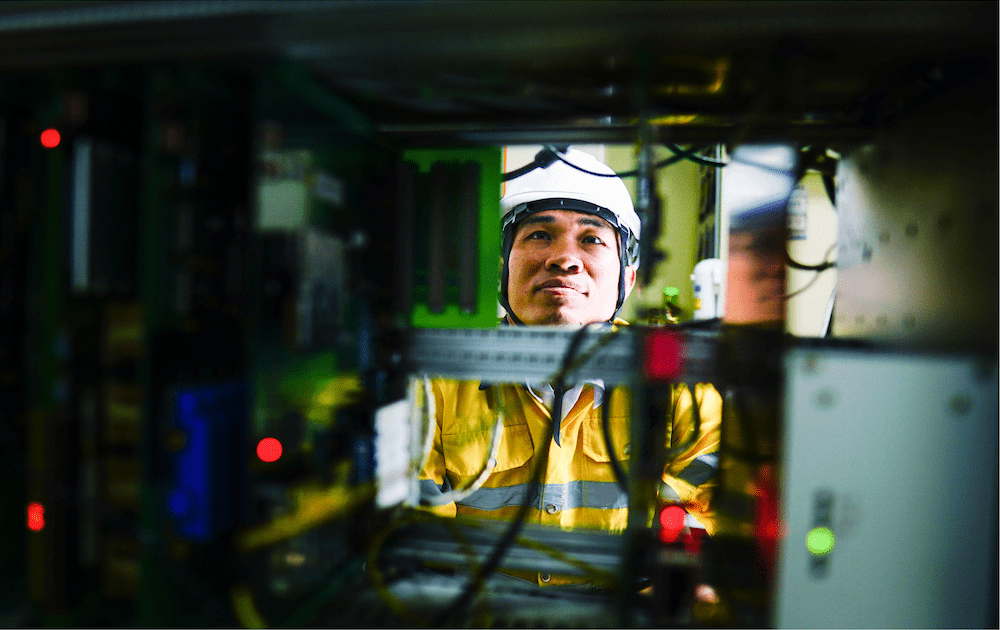We start a lot of sentences at AT&T with “For nearly 150 years.” We’re proud of our history and are honored to have had the privilege of connecting people for many decades. To build a business that lasts for more than 150 years, we must continue to listen to what customers want, constantly innovate, understand the market, and be able to manage change.
An eye on the past is important – our experience and the lessons we’ve learned give us the expertise to build scaled networks that support the entire country’s technological advancements. However, we’re building networks for the next century not the last one, and we’re laser focused on the innovation cycle before us.
We’re on our 5th generation of wireless technology (5G) and amid a transition from copper landlines to high-speed fiber and wireless connections. Copper-based services have a long-standing reputation that we’re proud of – a reputation of being resilient, reliable, and supporting the voice needs of so many generations. However, the technology created in the 1800s is no longer enough to support consumers and businesses today. Consumers are voting with their feet and moving to fiber and wireless services as they demand resiliency, reliability, and more. In fact, only ~1.3% of American households still use only landlines.1
Embracing change
Our networks must evolve to meet customer demand, but we understand change can be hard and must be managed the right way. As we move forward through this technology cycle, our customers’ connectivity is our number one priority.
- We will ensure consumer safeguards are in place, our customers stay connected, and the improvements we make create more opportunities for the communities and customers we serve.
- We’re working with the FCC and many state policymakers to help transition customers to newer technologies the right way, while protecting the culture of innovation that upgrading to modern services allows.
- And, we are meeting customers where they are with solutions like AT&T Phone – Advanced which let our home phone customers use the devices they already own to connect over our newer networks, while providing even more capabilities.
Why it’s important
A small fraction of consumers and some regulators are holding on to what they know and are reluctant to leave the comfort of past technologies behind, even though the industry landscape and technology have significantly changed for the better:
- More reliable & resilient: The persistent myth that traditional copper-based telephone service is more reliable in the long term than fiber or wireless is simply wrong. Fiber and wireless-based networks are faster, use less energy and require less maintenance than copper-based networks. For a more in-depth look at the important differences between these technologies, check out our new video.
- More sustainable: Fiber connections are also far more energy efficient than line-powered copper connections. In the process of transitioning neighborhoods from copper DSL to 1Gbps fiber, we have achieved a 70% reduction in our energy consumption.
- More control: Fiber and wireless give consumers more control in screening out unwanted calls. Transitioning off copper-based networks will allow for the implementation of better anti-robocall technology.
- Improved access to public safety: The ability for consumers to take their phone anywhere with wireless service has transformed public safety capabilities. It’s estimated that 80% or more of 9-1-1 calls in the U.S. each year come from wireless devices.2 Emergency services are upgrading to NG-9-1-1 systems across the country and enhancing their ability to equip first responders with more accurate location data, images and texts to provide more accurate and timely information.
- Competitive landscape: With the advent of modern broadband and wireless services, consumers now enjoy a wide array of choices not only in providers but also in terms of service packages, speeds, and pricing models. This flexibility allows consumers to tailor their voice and internet services according to their specific needs and budgets.
To fully embrace these benefits, we need regulatory policy that aligns with technological advancements and reflects consumer preferences. Right now, some rules still require continued investment in our copper-based network – regardless of whether the network itself is being used, or whether there are other, reliable connectivity options available to consumers in the marketplace.
That would be like if the newspaper industry was required to print 100 newspapers when only 5 people still receive and read the print version. Or the transportation industry being required to accommodate horses and buggies on every road.
We need rational policies that allow for a reasonable transition to modern network technologies.
We will be steadfast in working with our customers, policymakers, and others in the industry to push innovation forward. Whether it’s through continued investments or through public private partnerships that help us reach more unserved geographies, we want to help ensure every American has access to high-speed internet to expand opportunity and close the digital divide once and for all.
1 Wireless Substitution: National Health Interview Survey, July-December 2022 (cdc.gov)





